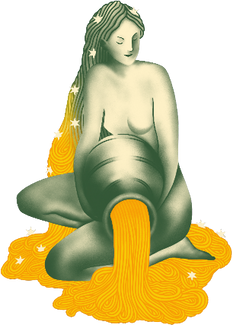What makes this sparkling wine uniquely Italian
Sparkling wine is a beloved way to mark a special occasion, from weddings to New Year’s Eve. We’re also firm believers in indulging in a glass of bubbly for no reason at all—just like any other wine, it makes a wonderful pair with food! And when it comes to choosing a sparkling wine, it’s no surprise that our hearts belong to the Italian favorite, prosecco.
With so many sparkling wines available to us from all corners of the globe, it can be hard to keep track of the differences between them. If you’ve ever wondered what makes prosecco different from Champagne or how to navigate the sparkling aisle at your local wine shop, we’ve got answers for you!

What is prosecco?
Let’s start with the basics: prosecco is a sparkling wine made in the Veneto and Friuli-Venezia Giulia regions of northern Italy (specifically in the provinces of Belluno, Padua, Treviso, Venice, Vicenza, Gorizia, Pordenone, Trieste, and Udine). It is named for the small town of Prosecco! This region was named a UNESCO world heritage site in 2019, with beautifully rolling green hills covered with terraced vineyards. Prosecco is the term for any wine made with the local glera grape, which may be blended in small quantities with other grapes to tweak the flavor profile. It is usually a white sparkling wine, though it can be found as a rosé sparkling and even a still wine, known locally as prosecco tranquillo.
Can any wine be called prosecco?
No! Just like Champagne, which must come from the Champagne region of France, prosecco is protected by DOC status. That means the process of growing, making, and bottling is all strictly regulated and must take place in its home region to be called prosecco. The label recognizes the unique local knowledge and qualities that make this wine special.
 What’s the difference between prosecco and Champagne?
What’s the difference between prosecco and Champagne?
Aside from the place where they’re made, prosecco and Champagne differ in the way that they are made. Both wines go through a primary fermentation process, where the pressed grape juice becomes wine, before any bubbles are added. (In fact, you can find still prosecco wines, known as prosecco tranquillo, which are bottled at this step in the process. For Champagne, a small amount of yeast is then added to each bottle, which creates carbon dioxide as it eats the sugars in the wine. When the bubbles have formed, the bottles are carefully opened by hand to remove the yeast, then re-corked. (Spain’s sparkling entry, cava, uses this method as well.) For prosecco, the yeast is added to the wine in stainless steel tanks, then bottled after the bubbles begin. This is known as the Charmat or Martinotti method. Generally speaking, this method gives the wine a fresher character, with the ability to showcase soft fruit flavors like apricot or citrus.
What do all the terms on my prosecco label mean?
When you’re shopping for prosecco, you’ll see labels like DOC, DOCG, Superiore, Frizzante…the list can be overwhelming! Here’s what they all mean:
DOC, DOCG: The official stamp that guarantees this bottle was made according to traditional methods in the Prosecco region. DOCG is the strictest standard, while DOC follows slightly more relaxed regulations.
Frizzante, Spumante: These terms refer to the level of effervescence in the wine. A frizzante prosecco will have light, subtle bubbles, while spumante’s fizz is stronger. You’ll see these words used to describe other Italian sparkling wines, too, like the well-known Asti spumante, a sweet sparkling moscato.
Dry, Brut: Winemakers note how sweet their prosecco is using a scale from Dry to Brut. On the sweetest end is Dry (confusing, we know!), followed by the moderately sweet Extra Dry, Brut, Extra Brut, and the very dry Ultra Brut. If you’re not sure which you prefer, we recommend starting with Brut, which will not have much noticeable sweetness but will have a rounder flavor than the bone-dry Extra Brut.
Superiore: The highest designation of prosecco quality is marked by the slightly lengthy phrase “Conegliano Valdobbiane Prosecco Superiore DOCG.” This is a smaller region within the larger prosecco zone between the towns of Conegliano and Valdobbiane, where the hills are especially steep and the grapes must be harvested by hand.
Col Fondo: Meaning “with the bottom,” this term refers to a completely different method of winemaking. Unlike the standard prosecco method, the yeast that creates bubbles for this wine is added directly to the bottles and left there, making the wine slightly cloudy. Natural wine fans will love the funky, sometimes slightly sour flavor of these unusual proseccos.















2 comments
Can you recommend a “good”Prosecco. I generally don’t like Prosecco but have had some better Prosecco.
We recommend Lamarca! We also have an article called “New Year’s Bubbly That Won’t Break the Bank” with more bottle recommendations :)